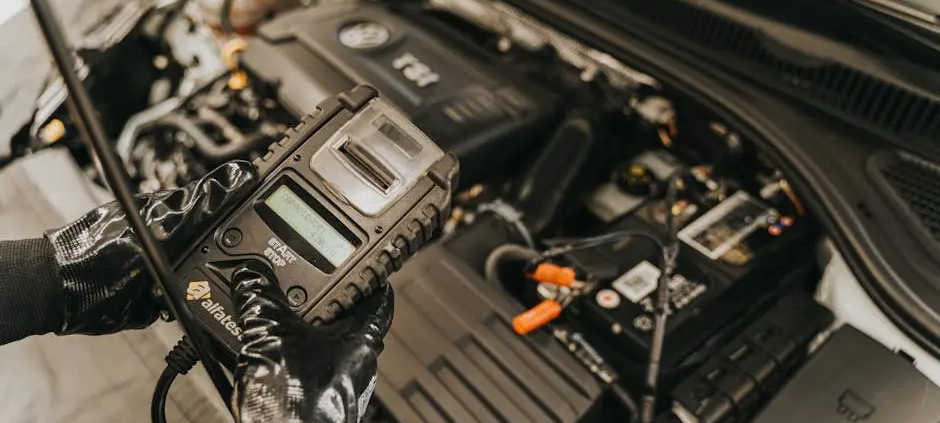Can I Do ADAS Calibration at Home or Should I Visit a Professional?
ADAS (Advanced Driver Assistance Systems) calibration is crucial for ensuring your vehicle’s safety features work properly. But can you do it at home, or is it best left to the professionals? In this guide, we’ll explore the steps involved in ADAS calibration and help you make an informed decision.
Understanding ADAS Calibration
Learn what ADAS calibration is and why it’s essential for your vehicle’s safety systems.
ADAS calibration refers to the process of ensuring that the sensors and cameras in your vehicle’s advanced safety systems are aligned and functioning correctly. This is vital for systems such as lane departure warnings and adaptive cruise control, all critical for your safety on the road. Without proper calibration, these features may not perform as intended, potentially putting you and others at risk.
Calibration is not a one-time task; it may need to be performed after any significant repairs that affect your vehicle’s geometry or when components are replaced. Understanding this process is key to maintaining your car’s safety technology.
Signs You Need Calibration
Identify the symptoms that indicate your vehicle may require ADAS calibration.
There are several signs that suggest your vehicle may need ADAS calibration. For instance, if you notice warning lights on your dashboard, particularly those related to safety features, it’s a strong indication to check the system. Another red flag is if your vehicle appears to veer slightly to one side when driving straight, as this can signal misalignment in the sensors.
Other symptoms include a sudden drop in the effectiveness of features like lane keeping assistance or automatic emergency braking. If these systems fail to activate or respond as expected, it’s time to consider a calibration check.
After an accident or a significant impact, even minor, it’s crucial to have your vehicle assessed, as the shock could have knocked sensors out of alignment.
Can I Do It at Home?
Explore the pros and cons of attempting ADAS calibration at home.
When it comes to ADAS calibration, many car owners wonder if it’s feasible to handle it themselves at home. While some might be savvy enough to attempt this, it’s important to weigh the pros and cons carefully. On the one hand, doing it yourself could save money and time. You have the flexibility to choose when to perform the calibration, and materials may be less expensive than professional services.
However, the risks associated with DIY calibration are significant. Without the proper tools and knowledge, you could easily misalign the sensors, making your vehicle’s safety features ineffective. This could potentially lead to accidents or costly repairs later. It’s vital to consider if you have the expertise and equipment necessary for a precise calibration.
In essence, while DIY calibration is possible, it’s often fraught with challenges that could outweigh any potential savings.
Tools and Equipment Needed
Discover the essential tools and equipment necessary for home calibration.
If you’re considering doing ADAS calibration at home, you must gather the proper tools and equipment first. Essential components include a calibration tool that can read and adjust the sensor settings. Some systems may also require a special laser alignment tool to ensure accuracy, highlighting just how technical this process can be.
In addition to the calibration tools, a reliable diagnostic scanner will help you check the performance of the ADAS features. Furthermore, a sturdy level surface to park your vehicle during calibration is crucial. Without these necessary pieces, you risk inaccurate calibration, which could undermine the systems you depend on for safety.
When to Consult a Professional
Understand the scenarios where it’s best to seek help from a professional technician.
It’s wise to consult a professional for ADAS calibration in various scenarios. For instance, if your vehicle has sustained damage from an accident, or if you’ve performed significant repairs that may affect the alignment of the sensors, seeking expert help is essential. A technician possesses not only the right tools but also the know-how to effectively recalibrate the system. They understand the specific protocols for your vehicle’s make and model, which is crucial for proper functionality.
Additionally, if you’re unsure about the calibration process or feel uneasy about doing it yourself, it’s better to leave this task to the professionals. Remember that your safety and the performance of your vehicle’s features are the top priorities.
Cost Comparison
Analyze the cost differences between DIY calibration and professional services.
When weighing your options for ADAS calibration, it’s essential to consider the cost involved. DIY calibration might initially appear to be the cheaper route. However, you must factor in the expense of purchasing specialized tools and diagnostic equipment, many of which can be pricey. Over time, if mistakes happen during a DIY effort, the cost for repairs can quickly escalate beyond professional rates.
In comparison, while professional calibration services may come with a higher upfront cost, they often provide peace of mind with guaranteed results. Technicians typically have the expertise needed to ensure that systems are calibrated correctly, which is crucial for safety features. Assessing the potential cost of an accident caused by failure to calibrate accurately could sway your decision toward professional help.
Final Thoughts
Deciding whether to calibrate your ADAS at home or seek professional help depends on your comfort level with technology and the complexity of your vehicle’s systems. If you’re confident and well-equipped, you might handle it yourself. However, for most drivers, consulting a professional is the best way to guarantee safety and performance.





Leave a Reply
Want to join the discussion?Feel free to contribute!